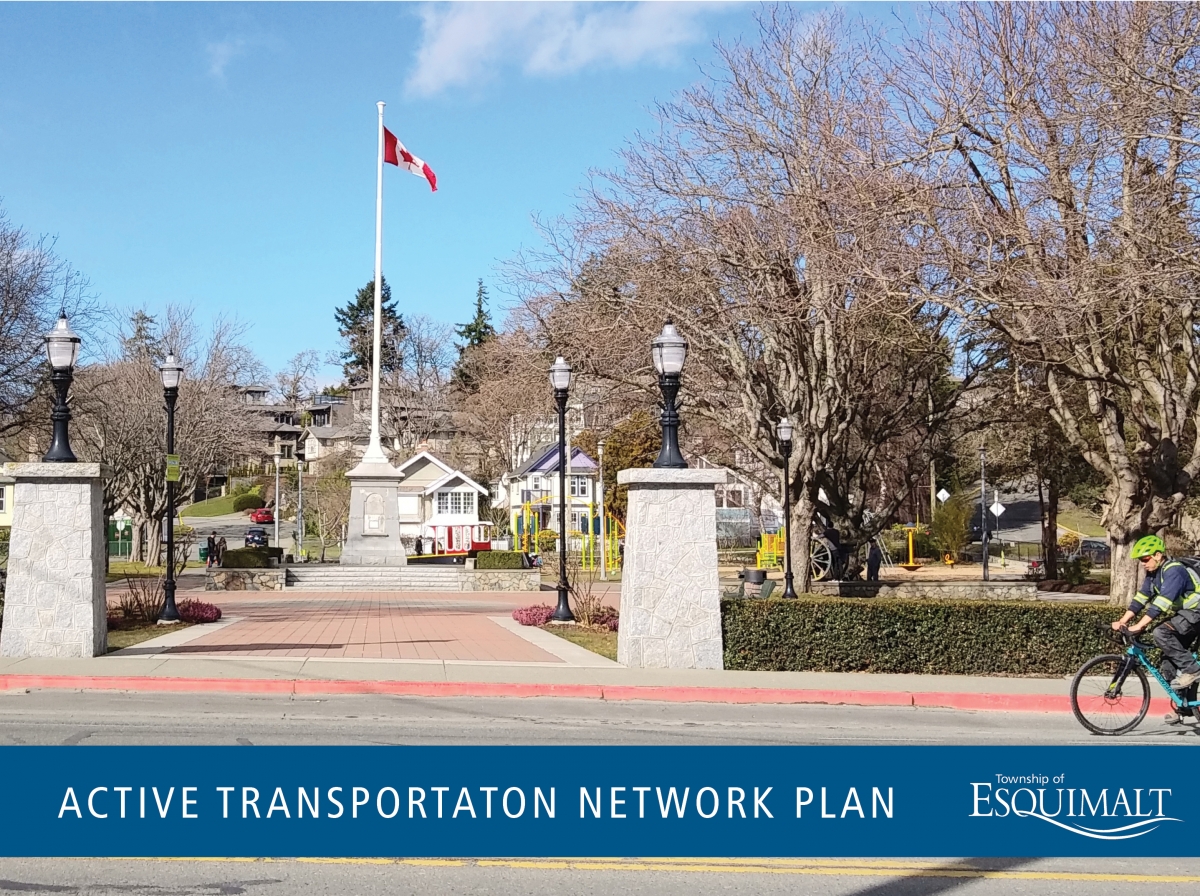News release
For immediate release
Esquimalt, B.C.— Beginning March 24, the Township of Esquimalt is launching a public engagement campaign to hear from residents about how they want to see active transportation opportunities improve in the community.
The idea of active transportation goes beyond cycling and walking: it includes any form of human-powered transportation, including walking, cycling, or rolling using a skateboard, in-line skates, wheelchair or other wheel-based forms of human-powered transportation.
“Esquimalt’s central location and compact design is ideally suited for active transportation,” said Mayor Barbara Desjardins. “We want to increase the ease and comfort of people traveling within and to our community by bike, foot and other active ways to foster our vibrant township.”
Given the existing constraints on in-person gatherings, feedback will primarily be collected by an online platform specially designed to gather input and ideas. On the platform, residents can find baseline information about Esquimalt, like population projections, current commuting patterns and other data. This will help provide context for where the township is now when looking to the future.
Although there is a survey to complete, the website is more than a survey. The interactive tool allows people to drop pins on a virtual map to show areas that need improvement or exhibit gaps in the network. The tool also has an open house feel, where people can contribute ideas for discussion by photo or text. The ideas remain on a digital board for others to view and build on. There is a question-and-answer section to allow common queries to be shared and responded to publicly. Participants can take part in any or all of the tools at once or as they have time.
One of Esquimalt council’s strategic priorities is to support ongoing improvements to transportation corridors. The active transportation plan supports this priority by working to improve the quality and experience for people walking, biking and rolling. The goal is to increase the share of trips completed outside a personal vehicle and to more broadly help reach the greenhouse gas targets set out in the Official Community Plan. The active transportation plan is intended to guide transportation options for the next 5-10 years and will build on existing initiatives like the Esquimalt Pedestrian Charter which formally recognized the benefits of walking as a key indicator of a healthy, efficient, socially inclusive, and sustainable community.
The plan will be bolstered by seeking out not only community feedback but feedback from stakeholder groups and neighbouring First Nations and municipalities. Feedback will then contribute to a draft plan later this summer. The draft plan will be shared with the public for review and will go to council in the fall. Council will consider both rounds of feedback when evaluating the draft plan and considering it for adoption.
The feedback tool and information about the plan can be found at EngagingEsquimalt.ca. Residents may also email input to engaging@esquimalt.ca.
Quick facts
- From 2011 to 2016, the proportion of work trips made by bicycle increased from 6 to 9 per cent, while commuting by vehicle decreased by two per cent.
- The total percentage of commute trips by active travel (walk, cycle, transit) is 36 per cent, which is the second highest active travel mode share in all of Greater Victoria after the City of Victoria.
- Esquimalt has the lowest daily trips and vehicles per household among all core municipalities. The average annual household transportation cost is $8,730, which is among the lowest among all municipalities in the Capital Region.
- From 2011 to 2017, the township’s overall active transportation mode share (walking, cycling, transit) has increased, particularly for trips within the Township growing from 36 per cent in 2011 to 44 per cent in 2017
- The total length of the township’s cycling network is 20.6 kilometers and includes a mix of facilities: multi-use pathway (E&N Rail Trail), buffered bike lanes, bicycle lanes, and shared use lanes.
- More about walking and cycling in Esquimalt
Contact
Tara Zajac
Manager of Communications
250-414-7122

